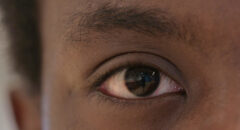
On Monday, August 21, 2017, all of North America will be treated to an eclipse of the sun.
An eclipse is a natural phenomenon. However, in some ancient and modern cultures, solar eclipses were attributed to supernatural causes or regarded as bad omens. A total solar eclipse can be frightening to people who are unaware of its astronomical explanation, as the Sun seems to disappear during the day and the sky darkens in a matter of minutes.
According to NASA, this is a "celestial coincidence," as the sun is about 400 times wider than the moon and about 400 times farther away. From certain vantage points on Earth, the moon will completely block the sun. This is called totality.
Since looking directly at the Sun can lead to permanent eye damage or blindness, special eye protection or indirect viewing techniques are used when viewing a solar eclipse. It is technically safe to view only the total phase of a total solar eclipse with the unaided eye and without protection; however, this is a dangerous practice, as most people are not trained to recognize the phases of an eclipse, which can span over two hours while the total phase can only last a maximum of 7.5 minutes for any one location.

Here's how to make a pin-hole viewing projector to safely see the eclipse:
Materials
Cereal box
Paper
Aluminum foil
Pencil
Tape
Scissors
Directions
Trace the bottom of a box on paper.
Cut out the rectangle.
Tape paper to inside bottom of box.
Close the top of the box.
Cut two holes in the top of the box.
Cover one hole with foil.
Poke a small hole in the middle of the foil.
Take your pinhole projector outside and face away from the sun so that its light shines into the pinhole.
Look through the hole you did not cover and you will see the sun projected on the white piece of paper inside the box.









